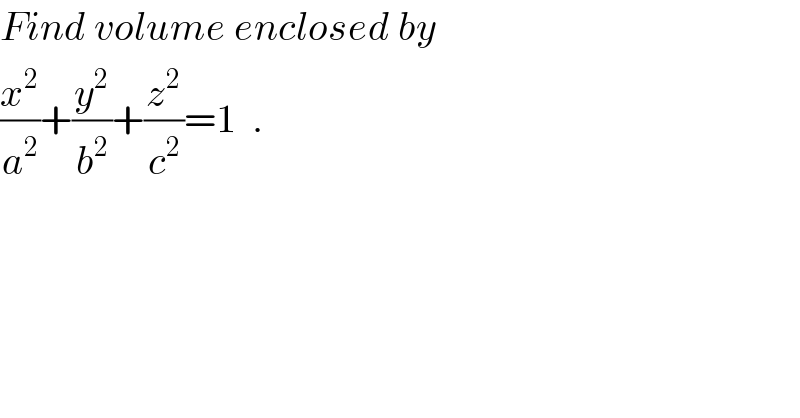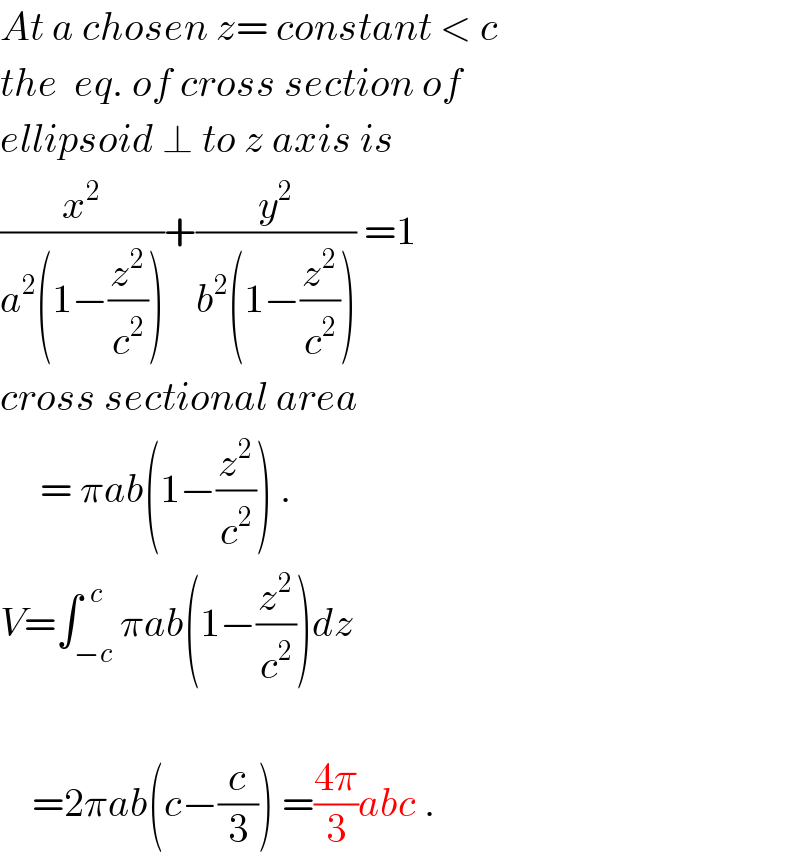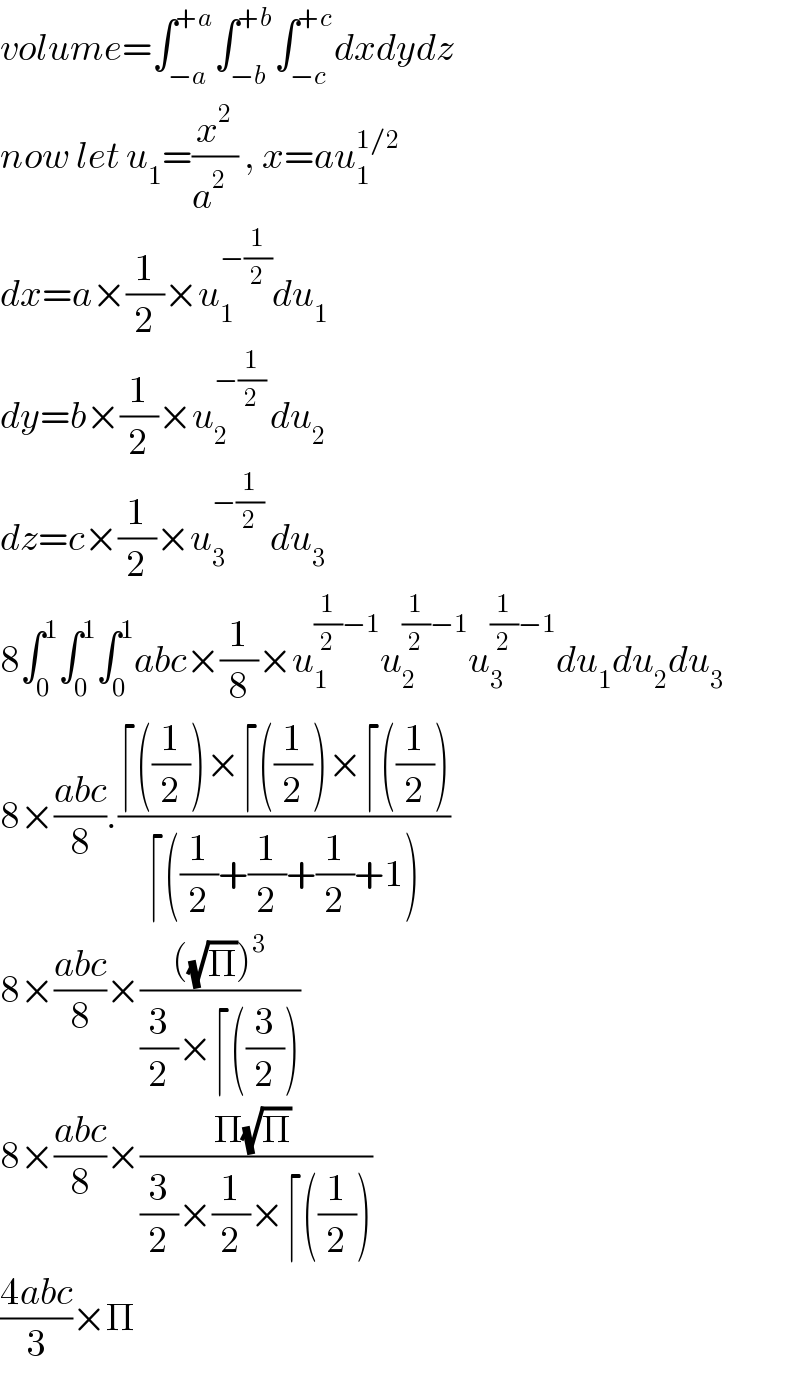
Question and Answers Forum
Question Number 35101 by ajfour last updated on 15/May/18

Commented by behi83417@gmail.com last updated on 15/May/18

Answered by ajfour last updated on 15/May/18

Answered by tanmay.chaudhury50@gmail.com last updated on 15/May/18

Commented by tanmay.chaudhury50@gmail.com last updated on 15/May/18

Commented by tanmay.chaudhury50@gmail.com last updated on 15/May/18

Commented by ajfour last updated on 15/May/18

